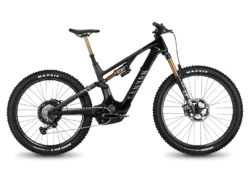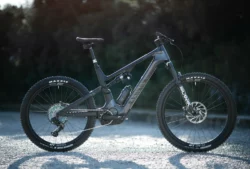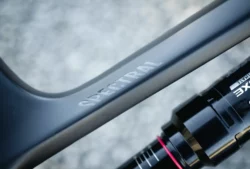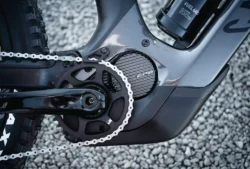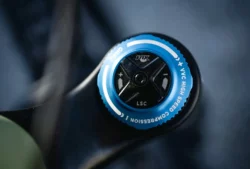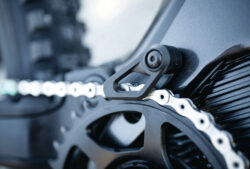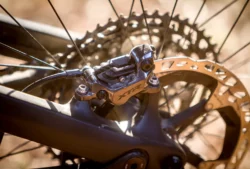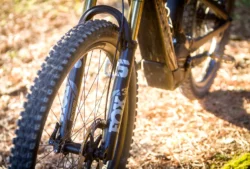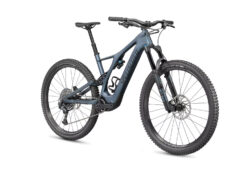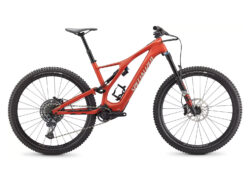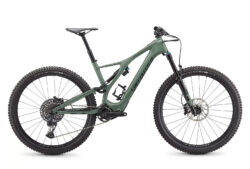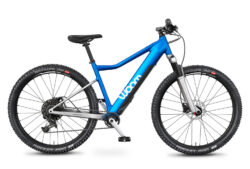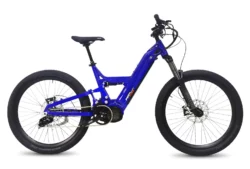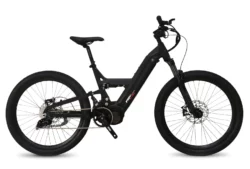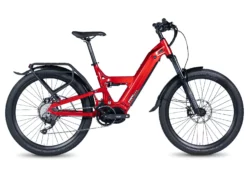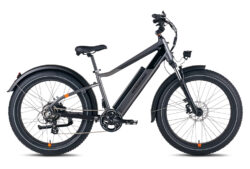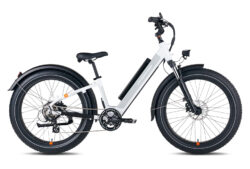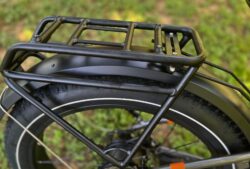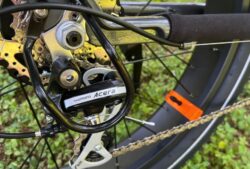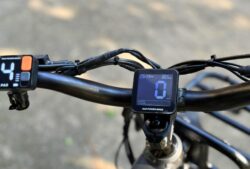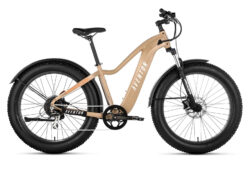There are two breeds of electric mountain bikes out there – ones that you can jump, high-speed turn, and generally abuse; and those that can cruise over mud, rock, and ice. In this article we will look at both types, including high-powered trail monsters but also a child’s electric mountain bike for introducing them to mountain biking.
We also cover a number of relatively affordable electric mountain bikes that will suit your needs for exploring the backwoods. Whatever you want from an electric mountain bike in 2024, there’s probably one for you here.
Best Overall Electric Mountain Bike
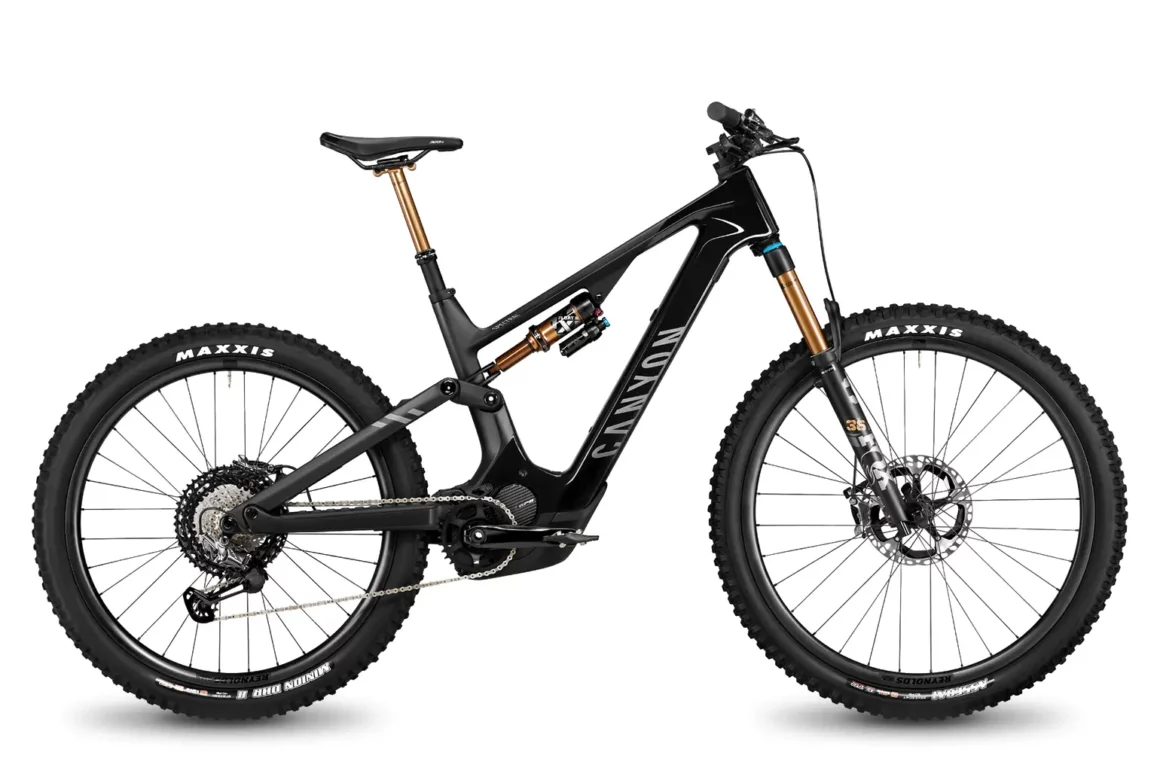
Canyon Spectral:ON
Highlights
- 12-speed Shimano XTR drivetrain with 10-51t cassette
- Reynolds 309 E carbon wheels
- Shimano XTR 4-piston disc brakes
Bottom Line
For those after a trail monster with a big battery and a big motor that (despite the huge battery) misbehaves beautifully on the trail, the Canyon Spectral:ON CFR could just be it.
The carbon wheels, fork, and frame work together to minimize weight. Its speed and maneuverability are amply helped by the newly redesigned Canyon BT002 battery which is one of the lightest for its size. Even with more than 200Wh of battery over the model it replaces, it is only marginally heavier and, consequently, the bike is almost as agile on the trails.
Thanks to the new battery design by Canyon, the battery casing in the downtube is very low profile — looking at it, you may not immediately guess it is a full-powered eMTB. Yes, the Shimano Steps EP8 motor is a giveaway but even so, you may initially think it a lower-range bike like the Specialized Turbo Levo we look at next.
Light (for its class), agile, and very powerful, this is likely the electric mountain bike to beat. The 150 mm travel front and rear shocks made by market leaders Fox enable it to ride supremely over most terrain thrown at it.
Things to Consider
Though they reduce the headline weight of the bike, the Maxxis Assegai tires are a little too fragile for the sort of abuse this eMTB is likely to take. Even while it will take the bike to around 50 lbs, it may well be worth putting Maxxis Minions on it instead — a minor aftermarket adjustment but one that will make it bulletproof.
Best Lightweight Electric Mountain Bike
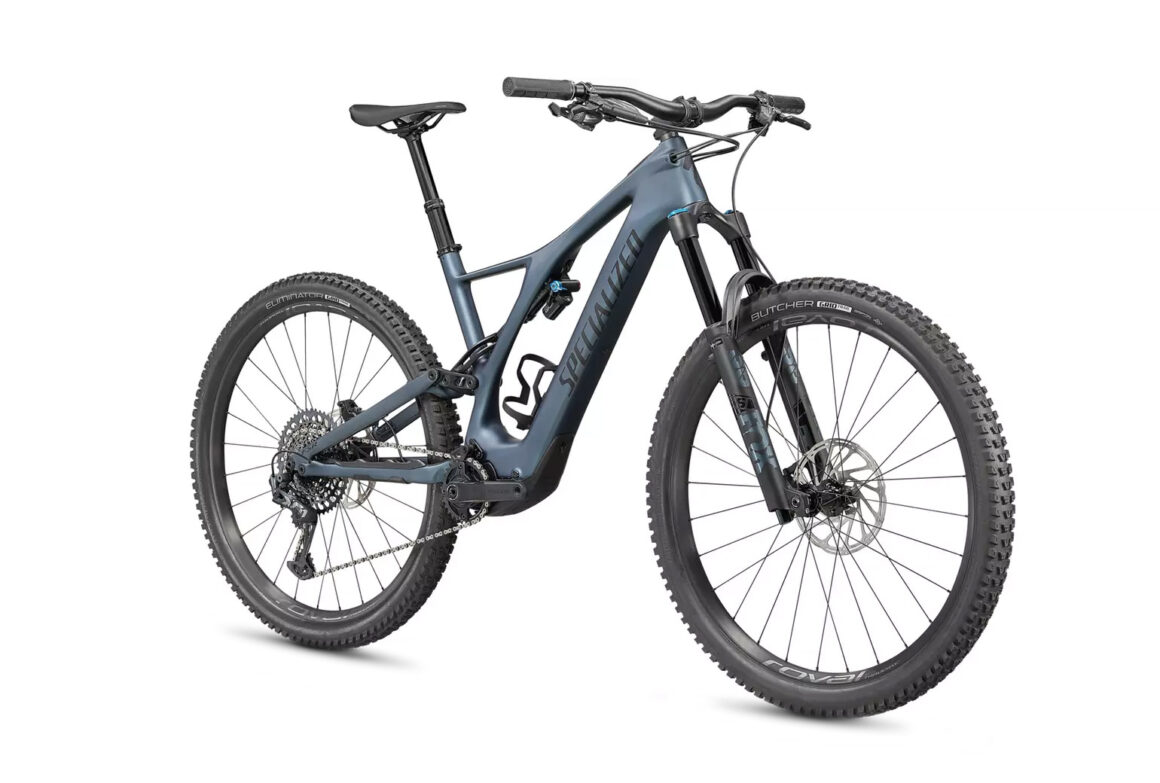
Specialized Turbo Levo SL
Highlights
- 150 mm travel Fox fork and shock
- Super lightweight Specialized SL 1.1 motor
- 12-speed SRAM NX Eagle pedal drivetrain
Bottom Line
Where the Canyon above has a big motor and a big battery, this Specialized is almost 10 lbs lighter with a far smaller battery and motor. Why would you want this? It’s a half-step away from an analog MTB without the blundering weight of a full eMTB.
What you get is a stump jumper that is nimble on the trails and behaves far more like a standard mountain bike than an electric bike. You will be able to carve turns more easily and control it on steep downhill sections.
The smaller motor and battery are designed to make you feel stronger on uphill stretches without going the whole hog into a beefy 250+ Watt motor. Where a large rider might feel like a far smaller one on the Canyon Spectral:ON CFR above, you may well be a little more lightweight yourself and just need that extra kick.
Things to Consider
Because of the weight savings you get from the reduced electric might of this bike, you will need to ride it hard to enjoy a full day on the trails. Though you will have had the feeling of being totally spent before, you’ll certainly feel it after a big day on this too.
Best Electric MTB for Kids
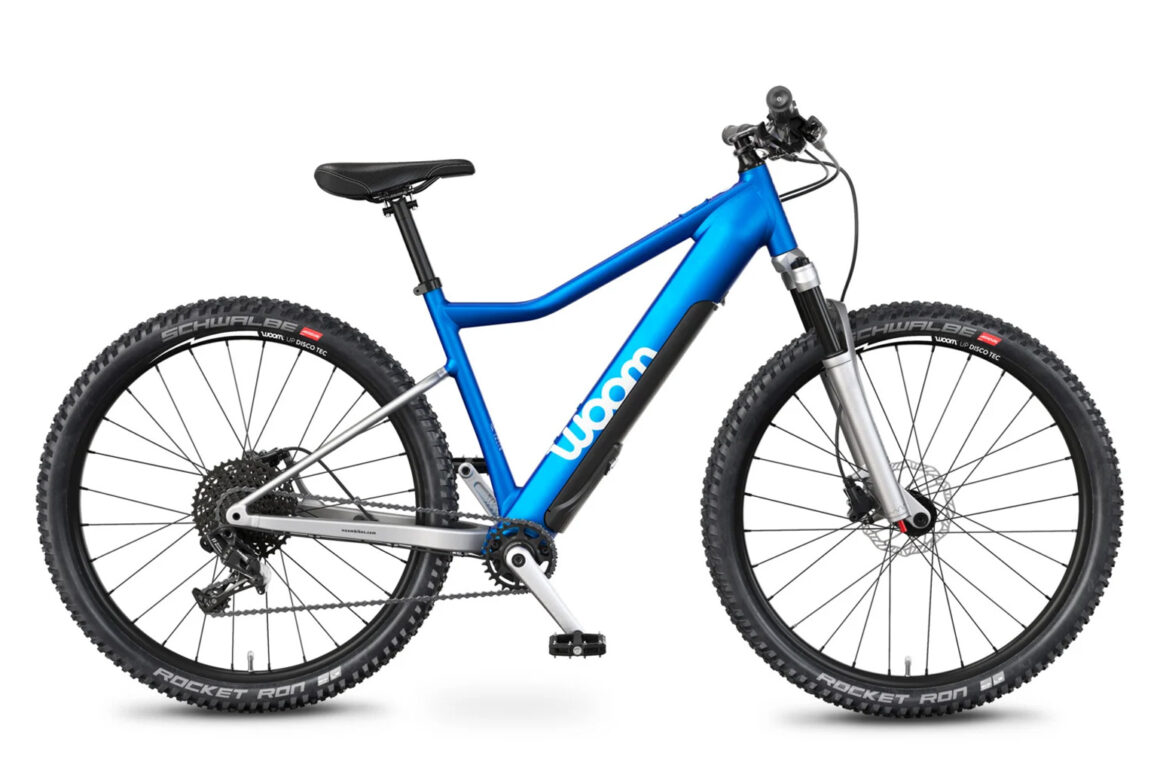
Woom UP 6
Highlights
- Fazua Evation battery and motor system
- 11-speed SRAM NX pedal drivetrain
- 90mm travel hydraulic air suspension fork
Bottom Line
Many e-bike manufacturers make kids bikes that resemble puppy dogs thanks to ungainly components added to a smaller frame. If this was a dog, it would be a mad terrier that Dobermanns would get nervous around.
Small but perfectly formed and designed from wheel to brake handle for the size of bodies and limbs that will use it, the Woom UP 6 (and smaller UP 5) is an excellent eMTB for little ones.
This model is built for 10-14 year-olds, whereas the UP 5 is for 7-11 year-olds and in every way, is made for them to appreciate the best electric mountain bike for their size. The brake levers are designed for smaller hands, as are the other controls on the handlebars. It is even limited to 12 mph to prevent your offspring from going too fast on the road.
Riding is a dream, with the center of gravity just where it should be and allowing the youngster to throw it into turns and bends — even jumping easily.
Things to Consider
Both the Woom UP 6 and 5 cost more than $3,000, yet kids will be kids. Though Woom suggests it could be ridden to school, would you trust them to lock it properly? Looking after it — after a day on the trails for example — will require a level of responsibility that may fall upon you if it is to be properly maintained.
Best Step-Through Mountain Bike
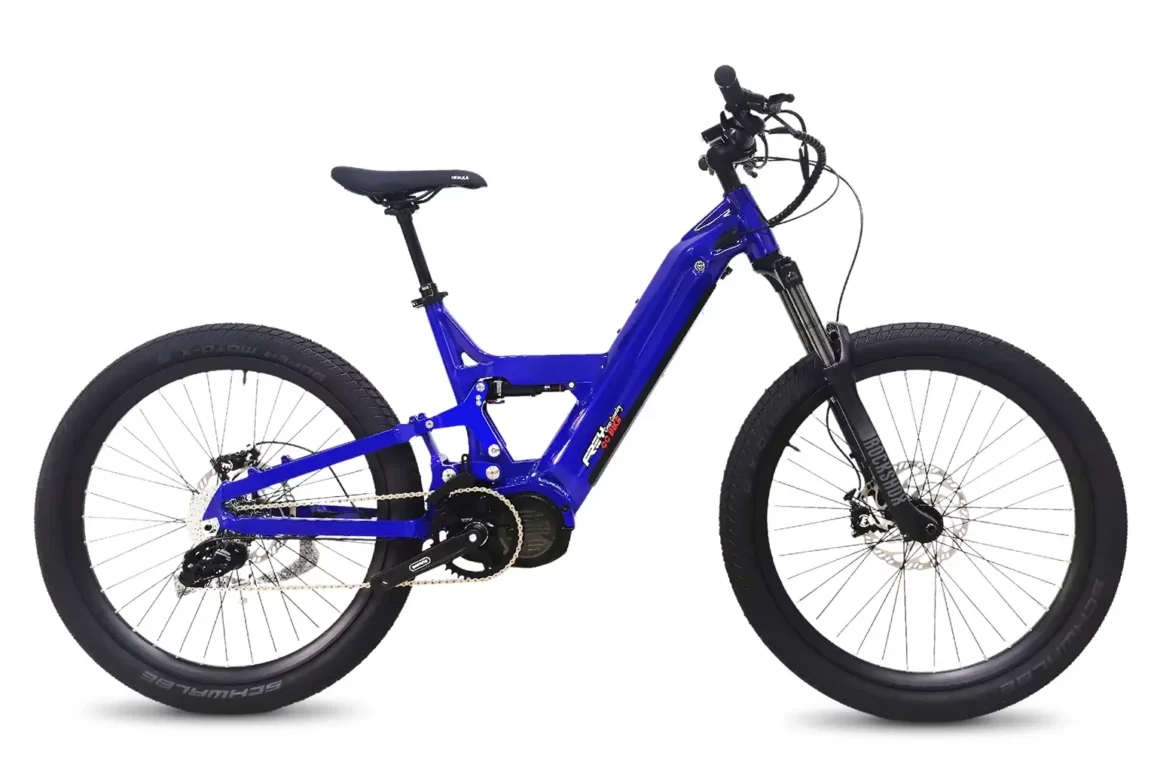
Savannah ULTRA CC
Highlights
- 1000 W Bafang motor
- Dual suspension
- Magura MT5 4-piston disc brakes
- Rack, fenders and lights optional
Bottom Line
Though there are women’s eMTBs out there like those made by Haibike, this particular electric bike merits attention due to its step-through design. With 160 Newton meters of raw power available from its Bafang M620 motor, it will get up almost anything from a standing start too.
The Magura MT5, four-piston disc brakes can be found on a number of quality eMTBs too, but what sparks our interest the most is the dual suspension design. It has a Rockshox Monarch, 165mm travel rear shock, and a Rockshox Recon RL Boost fork that would turn the heads of many an MTB enthusiast.
Coming in a fat tire or MTB configuration, if you are planning on heading out to explore the countryside on unpaved tracks and trails, this e-bike won’t let you down.
Things to Consider
Coming in at a beefy 73 lbs, this isn’t a super light and nimble trail beast by any means. To take it from hard turn to hard turn you will have to put in a fair bit of effort, and even with its high-quality suspension, you wouldn’t want to do much of a jump.
Where other electric mountain bikes with their mud tires may not be so suited to the road, the Frey Savannah Ultra CC would be more at home on road (but not so unhappy off).
Best All-Terrain Electric Bike Under $2,000
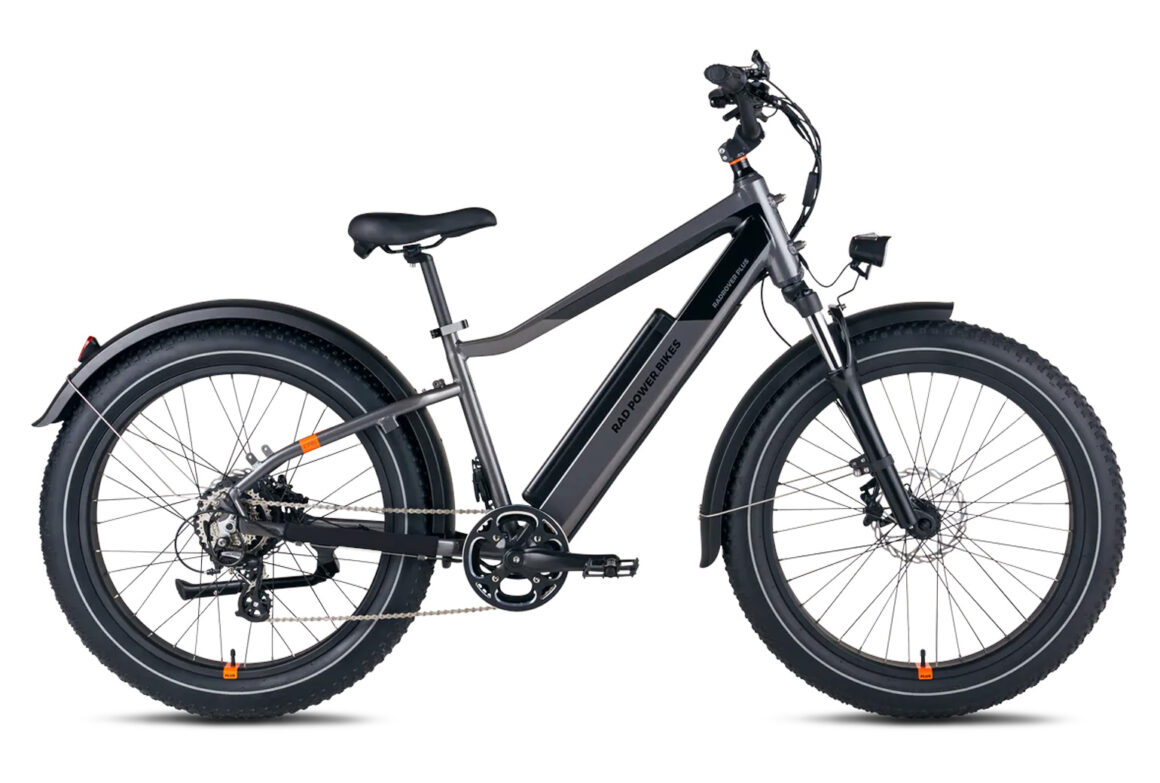
RadRover 6 Plus
Highlights
- Range of optional extras available
- 750 W brushless rear hub motor
- 7-speed pedal drivetrain
- 60 mm travel front fork with lockout
Bottom Line
Not all electric mountain bikes are for doing jumps that would make your mother weep and put a grin on your face that would make your partner jealous!
The all-American e-bike brand RadPower is known for heavy-duty electric bikes that have a great presence on their road and can handle forays into the woods. At a basic model list price of just $1,999, you won’t find many similarly-capable e-bikes in the same price range.
Admittedly not for throwing around the trails and turns of a mountain for a variety of reasons (not least its weight), this e-bike can still be happily taken into the wilds. With its powerful, 750W motor it can generate 80 Newton meters of torque that could carry you and your catch up the slopes and back to base for the evening.
Things to Consider
Where the nimble trail monsters we opened this article with are extremely economical on battery, the RadRover 6 Plus isn’t at all. This is due to the fact it is very heavy and runs using a rear-hub motor and cadence sensor for pedal assist. If using it for hunting or fishing, try parking your RV or truck no more than 10 miles from your target grounds to have a safe margin of battery to get you home.
Best Fat Tire Electric Mountain Bike Under $2,000
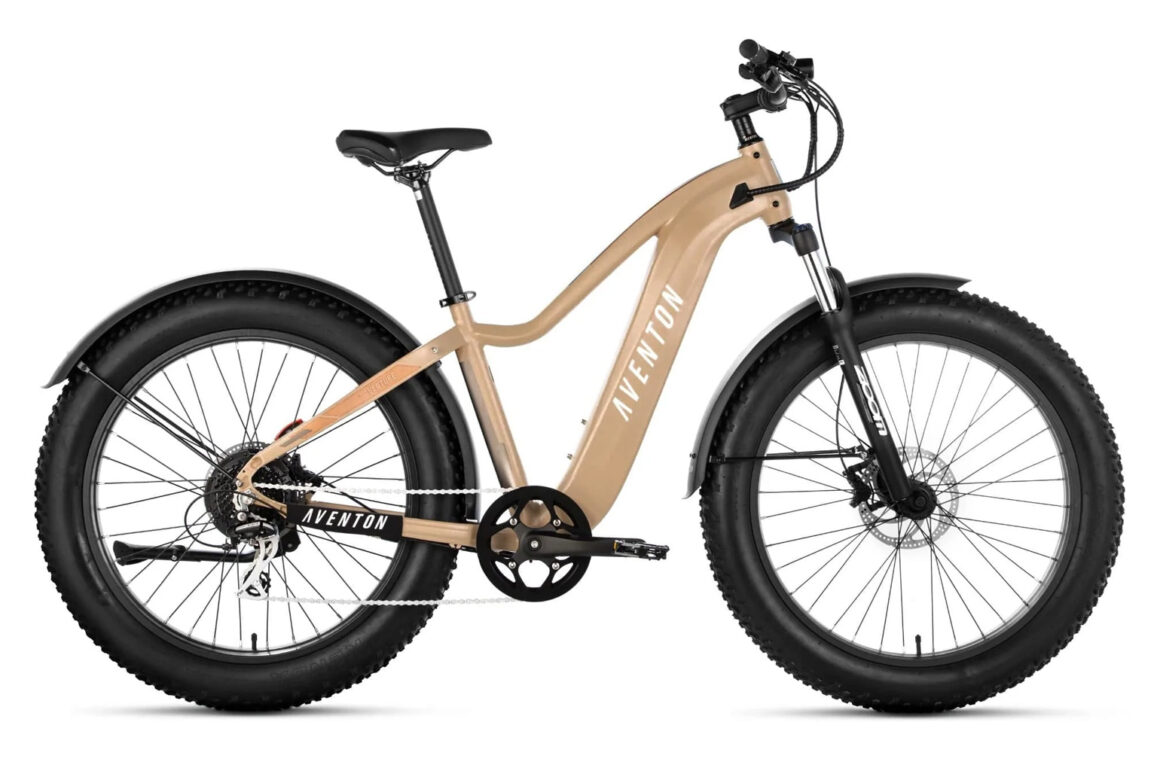
Aventon Aventure
Highlights
- Can be Class 2 (20 mph) with a throttle or Class 3 without (28 mph)
- 80mm travel sprung fork with lockout
- 8-speed pedal drivetrain
Bottom Line
Widely held as the best fat tire electric mountain bike for under $2,000, the Aventon Aventure offers a ‘fat’ bang for the buck. Whether ridden with throttle at 20 mph or modified to a Class 3 pedal-assist model, this is a great machine for $1,999.
Although it’s capable of handling most terrain, it isn’t as well-specced with optional extras as the RadRover above. That can make it more of an electric mountain bike than a road bike, and with its grippy 4” tires, it will certainly manage off-road terrain comfortably.
Things to Consider
Like with the RadRover 6 Plus, it’s probably best not to throw yourself down a mountainside with jumps and switchbacks while riding the Aventon Aventure. If you are planning to explore the uplands above a lake, it may do the job very well. Just don’t plan an epic 50-mile trek when you do.

